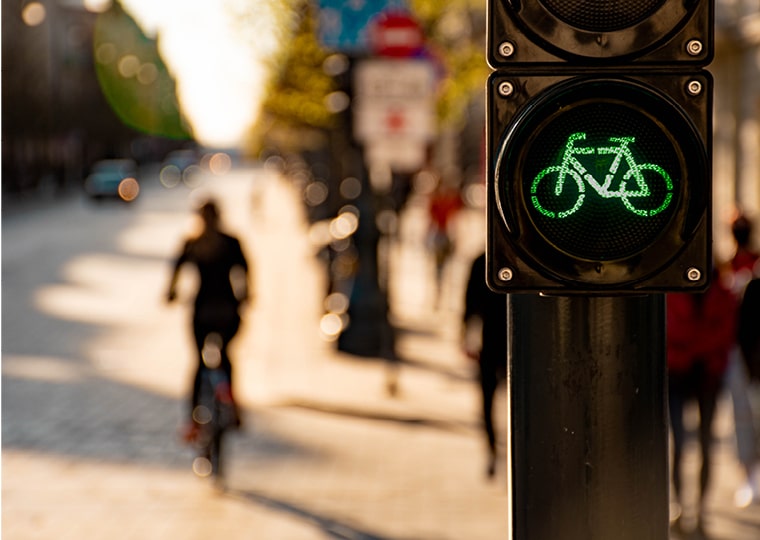
In Paris, voters recently approved a ban on for-rent e-scooters citing mounting frustrations about how these devices are often abandoned across the city, as well as safety concerns for e-scooter users and pedestrians.
Following this “mini referendum” – which was approved by 89% of voters, but representing only 103,000 people, or about 7.5% of all registered voters – the City Mayor Anne Hidalgo called the vote a “great victory for local democracy.” But many e-scooter and other micromobility device advocates, including the Parisian operator Ime, Dott and Tier, pointed out that the Paris ban bucks what is an otherwise rising global trend to expand the availability of micromobility device availability due to the substantial health and climate benefits of micromobility device adoption.
As the former City of Austin, TX, Transportation Director, where our agency regulated one of the largest deployments of dockless e-scooters and e-bikes in the country, I saw firsthand how personal mobility devices like rental e-scooters can serve as a crucial urban mobility tool. In Austin, and elsewhere around the county, these devices played an important part in reviving communities following the COVID-19 pandemic by allowing critical front-line workers to commute to and from work when buses and rail were not considered safe. When paired with supportive bicycle infrastructure programs, these technologies offer a smart city solution to the first/last mile access dilemma for transit, as well as a smart green alternative to the private automobile for making short trips.
Over the past five years, the market and growth rate for e-scooters and other micromobility devices has never been more robust. And there’s more growth on the horizon. As more local governments and transportation agencies look to decarbonize their transportation networks in the coming years, analysts project the electric scooter market to register a compound annual growth rate of 9.9% from 2023 to 2030.
Dockless personal mobility devices like e-scooters and e-bikes cause their fair share of concerns in urban settings even as they solve mobility ones. During my time in Austin, and when visiting other North American cities, I’ve witnessed both users and non-users alike who fail to understand the value of these devices as demonstrated by how e-scooters or bikes are sometimes strewn on city sidewalks, blocking wheelchair ramps or other pedestrian access points. Contrast that behavior to rental car users, who intrinsically understand the value of the vehicle and typically take excellent care of it. Regarding rental micromobility devices, we shouldn’t let incidents of bad behavior turn us away from a potentially useful and green mobility solution. Instead, municipal and industry leaders should look at examples where cities successfully addressed some of the negative attributes of these systems so we can maintain the mobility benefits of the technology.
As part of STV’s Smart Cities practice, when advising communities who are looking to integrate new technology into larger mobility plans, I encourage our clients to investigate and understand both the positive and negative attributes of those new technologies, to understand the disruptive potential but also the benefit potential. I also seek to bring them examples as to how different cities address the negative attributes of deployment. With regards to rental e-scooters and e-bikes, I was recently in San Francisco where rental devices are required to be secured to bike racks or similar security devices on-street when not in use. In requiring devices to be secured at the end of a ride, rental companies in San Francisco have essentially created a “social contract” with users, reinforcing the notion of device and system value. I also observed that devices were less likely to be blocking pedestrian ramps, and transit shelters as compared to cities where this type of policy does not exist.
In addition to requirements to secure devices at the end of use, many cities limit the number of device companies operating within their municipal limits. Home rule cities can often declare new mobility tools like rental e-scooters and e-bikes a “public utility” and franchise use of the streets to a limited number of operators. Under this approach, the authorizing jurisdiction can stipulate operational rules and measures of effectiveness to address undesired outcomes.
Individuals, the private micro-mobility industry, and local governments have a shared role in assuring that emerging transportation modes like rental e-scooters and e-bikes remain viable and available in cities across North America. STV’s team of industry leaders can help cities work cooperatively with emerging mobility technologies to define appropriate regulatory structures and appropriate levels of deployment to meet public needs and build a healthy social contract with users and non-users alike. Overall, we strive to facilitate the necessary partnerships that can achieve a positive outcome and strong political support for emerging mobility solutions.

Robert Spillar, P.E., is a STV senior vice president and the firm’s national director of smart cities. As a nationally recognized transportation, mobility and urban innovation thought leader, Spillar leads a multidisciplinary practice of planners, finance experts, designers, procurement and grant consultants, digital technologists and program managers. Spillar is also an avid user of rental e-scooters and e-bikes.






